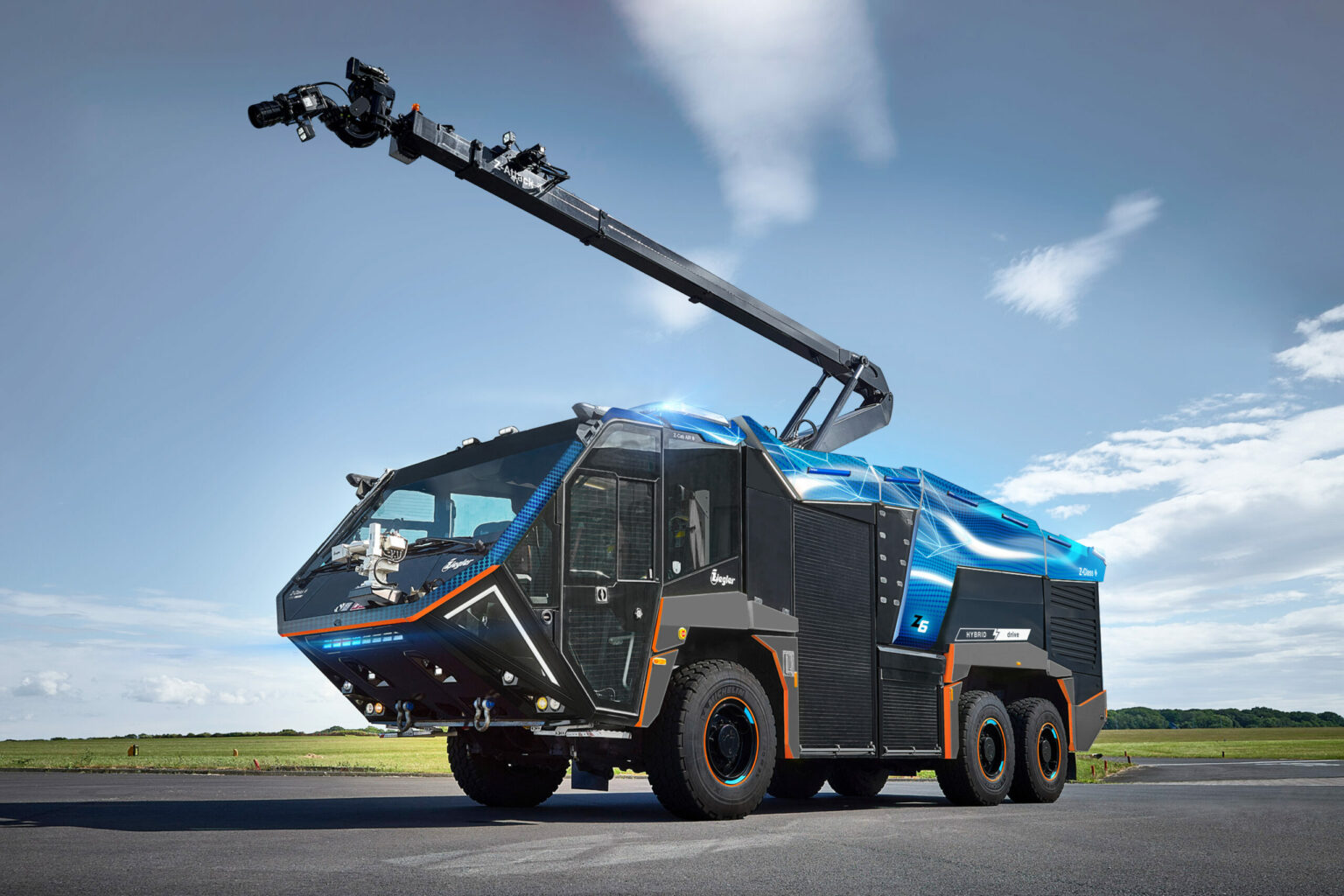Exclusive: Firefighting on the runway with Ziegler
- October 13, 2022
- 8:10 am


Iain Hoey
Share this content
IFSJ sat down with Fabian Schmidt, Product Manager, ARFF Vehicles at Ziegler to talk about the new Z6 with Hybrid Drive
Can you tell me about yourself, your position at Ziegler and your background in the industry?
I am product manager for aircraft rescue and firefighting (ARRF) vehicles and am responsible for all aspects and issues regarding any firefighting vehicles which are in use at airports to secure safety on runways. It is very important to be in close contact to the end user to know about their needs, wants and wishes. ZIEGLER offers two types of ARFF vehicles, one on commercial standard chassis – the Advancer – and one on non-commercial chassis – our Z-Class product family.
I have worked for ZIEGLER Group for 14 years and since the beginning of my career I have been in close contact with airports and the wide array of people who work there. I come from a background in technical studies with an Engineers degree. In addition, over my career I have gained insights into the work of an airport firefighter on site of several airports.
Can you talk about the Z6 Hybrid: its development, why it was created, and some of its technical information?
The idea behind this development – together with Titan as chassis manufacturer – is to support airports with their efforts to reduce emissions but to still have an operational vehicle which simultaneously fulfils all relevant standards and norms independently from HV-battery charge conditions. For that reason, we have stuck with the diesel engine for the conventional version of the Z6.
Regular journeys and movements the vehicle carries out can be emission-free. For alarm drives, the Z6 Hybrid provides high performance and power levels as both power sources – the combustion engine and electric motor – are working together and lead to better acceleration and shorter intervention time.
The vehicle has both the Diesel engine with 566 kW and an electric engine with 230 kW (continuous) up to 280 kW (peak). There is also a lithium-ion battery pack with an installed energy of 104 kWh on board. Charging this is possible with an CCS 2 – fast charger (650 Volt DC) or an on-board charger (400 V / 32 A / 22kW).
Can you tell me about the planned field-testing for the Z6?
The next step for the Z6 will be testing that it performs safe and stable drive and operation when using the hybrid system. The testing will involve validation and verification of calculated and estimated performance figures, such as its fully electric drive range and its emergency response capabilities in combined hybrid drive mode.
After this basic testing there will be a field test under training and operation conditions carried out in cooperation with Fraport AG on site on Frankfurt Airport, Germany. Due to selection of SCANIA Hybrid standard components, we are sure it will achieve all expected vehicle performance figures and in addition we also guarantee a professional after sales service.
What has the user response been like for the Z6 Hybrid?
There is big interest in the new Z6 Hybrid because everyone is working towards strengthening their environmental and climate protection activity. Airports aim to become greener and more sustainable and the fire departments are confident in the optimised performance of the Z6 as a way to help reach that goal.
What special requirements are needed for airport firefighting vehicles?
Constant readiness. We are talking about a vehicle with a huge gross vehicle weight due to high volumes of extinguishing agents of water, foam and powder. This Z6 Hybrid, for example, carries over 14 tonnes which when combined with the vehicle weight comes to around 39 tonnes. The vehicle must be ready to be deployed to any point of the airport as fast as possible in case of an emergency.
The end user expects easy operation and handling of the vehicle. This is ensured through our intuitive operating concept Z-Control. The vehicles at the airport must manage high speeds whilst driving under extreme conditions with tight curves and turns. For safe cornering, the vehicles have a very low centre of gravity and in a critical drive situation a roll-over warning and stability assistant will activate.
What are your thoughts on the future of electric vehicles in firefighting?
We will continue keep our eyes open and maintain close contact and technical evaluation with our partners like chassis manufacturers. Internally we will continue to work on adequate and compatible solutions for our extinguishing technology. Besides the positive environmental impact, electric engines will provide more efficiency and performance which will be crucial for our business fields.
Is Ziegler working on anything or does it have any future plans of note that you would like to mention?
We are continuously working on the optimisation of our product, based on the very welcome feedback of our customers. In addition to that, our innovation team and product management will keep their eyes on the needs and trends of the customers and the market. The next product launch will be the next generation of our portable pump.
In addition, due to the megatrend of digital transformation, we will also be championing our digital products Z-Connect and Z-Remote and are dedicated to extend our cooperation with the IMBOS network. This will provide holistic vehicle management, operations management, remote and predictive maintenance services including E-mobility.
This article was originally published in the October edition of IFSJ. To read your FREE digital copy, click here.



